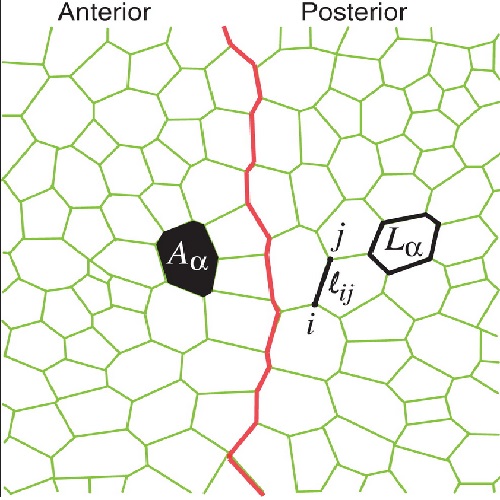Increased cell bond tension governs cell sorting at the Drosophila anteroposterior compartment boundary.
Subdividing proliferating tissues into compartments is an evolutionarily conserved strategy of animal development [1-6]. Signals across boundaries between compartments can result in local expression of secreted proteins organizing growth and patterning of tissues [1-6]. Sharp and straight interfaces between compartments are crucial for stabilizing the position of such organizers and therefore for precise implementation of body plans. Maintaining boundaries in proliferating tissues requires mechanisms to counteract cell rearrangements caused by cell division; however, the nature of such mechanisms remains unclear. Here we quantitatively analyzed cell morphology and the response to the laser ablation of cell bonds in the vicinity of the anteroposterior compartment boundary in developing Drosophila wings. We found that mechanical tension is approximately 2.5-fold increased on cell bonds along this compartment boundary as compared to the remaining tissue. Cell bond tension is decreased in the presence of Y-27632 [7], an inhibitor of Rho-kinase whose main effector is Myosin II [8]. Simulations using a vertex model [9] demonstrate that a 2.5-fold increase in local cell bond tension suffices to guide the rearrangement of cells after cell division to maintain compartment boundaries. Our results provide a physical mechanism in which the local increase in Myosin II-dependent cell bond tension directs cell sorting at compartment boundaries.

- Curr. Biol. 2009 Dec 1;19(22):1950-5
- 2009
- Developmental Biology
- 19879142
- PubMed
Enabled by:
